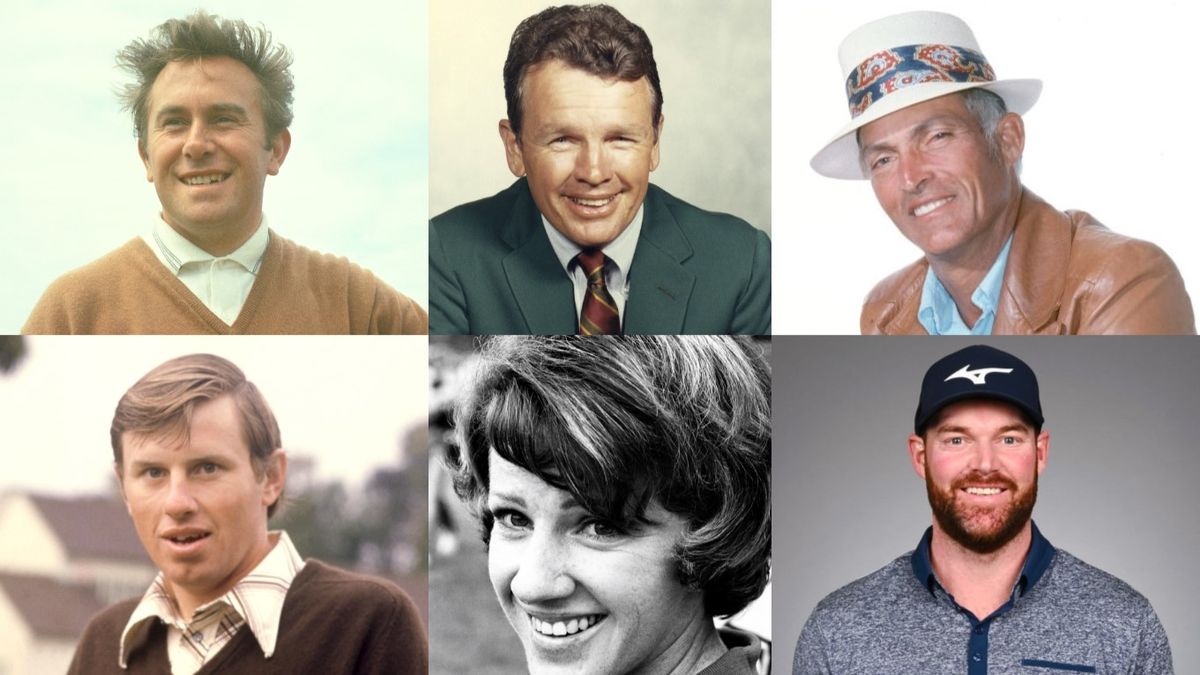Peter Oosterhuis
(Image credit: Getty Images)
Peter Oosterhuis was the best European golfer of the mid 1970s, winning the European Tour’s Order of Merit in the Tour’s first three seasons from 1972 to 1974. He had also topped the Sunshine Tour’s Money List in 1970 and 1971.
He made his Ryder Cup debut in 1971 and has one of the best records of a European player, with 14 wins and 3 halves from his 28 matches. He won six singles matches, a victory tally which has still not been bettered by anyone from either side. He played eight singles matches in the Ryder Cup, and beat Arnold Palmer twice.
He led the 1973 Masters after 54 holes by three strokes, but a final round 74 left him two shots off the winner and tied in third place. It was the best Masters result by a Brit until Sandy Lyle won the Green Jacket in 1988.
He was runner up in The Open Championships of 1974, when he finished four shots behind Gary Player, and of 1982, when he and Nick Price finished a shot behind Tom Watson.
Oosterhuis had joined the PGA Tour in 1975, but never had much success on the other side of the Atlantic, with one solitary PGA Tour win, the Canadian Open of 1981.
His name would crop up in the ‘best golfer not to to have won a Major’ discussions, but he son Bob has said that his father had told him “while winning a Major would have been great, he was proud of his record and he didn’t feel a sense of loss.”
Peter Oosterhuis’ father was a Dutchman who has escaped to Britain during the war, hence why this almost stereotypical English gentleman had a foreign name. His father married an Englishwoman and worked as a commodity broker in London, dealing mainly in coffee, and the family lived in Dulwich. His mother played golf and Peter became a member of Dulwich and Sydenham as a child.
Peter Oosterhuis was renowned for his modesty and politeness. “Peter was unarguably our finest gentleman golfer,” said Ken Schofield, former executive director of the European Tour. “Today’s equivalent would be Justin Rose.”
After retiring from tournament play, Oosterhuis worked at golf clubs, mainly in the US, before becoming a popular golf commentator, working in both the UK and US, but mainly the latter, where he lived.
Fellow commentator Renton Laidlaw, reflected once that “I could not have asked for a better person with whom to work. He was the absolute gentleman on the air. He could be critical but never cruel. He had no side to him. He was modest.”
Susie Maxwell Berning
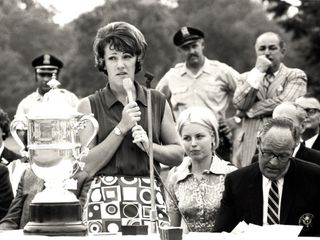
(Image credit: Getty Images)
Berning was the first mother to win a Major, and remains only one of four mothers to have done so, alongside Juli Inkster, Nancy Lopez, and Catriona Matthew. In all, she won four Majors: the U.S. Women’s Open in 1968, 1972 and 1973 and the 1965 Women’s Western Open.
She had grown up beside Lincoln Park Golf Course in Oklahoma City and, as a girl, had asked the club pro if she could work as a caddie there, as two of her brothers did. The pro told her it was not work for a girl.
One day, when she was looking after some horses, one of the horses was spooked by a train whistle and bolted onto the course, doing damage to a green. She was sent to see the pro, who thought this might have been her revenge for being turned down for caddy work.
When it was clear this was not the case, he asked her if she would give his children riding lessons, as a way to make amends for the damage to the course. The pro was UC Ferguson, who became a good friend and who tried to persuade get her to take up golf, but she replied that it was a “silly game”.
But then Patsy Berg came to the club to give a clinic, Berning recalled later that: “Her clinics were so funny. I thought: that’s what golf is – hey, I want to do that!” So she took up golf, aged 15.
She won three consecutive Oklahoma State High School championships and three consecutive Oklahoma City Women’s Amateur championships and became the first women to win a golf scholarship to Oklahoma City University. She played at university under the name Sam Maxwell, so as to disguise her gender on teamsheets.
When Berning won her second Women’s Open in 1972, she also became the first mother to win a major title. Her daughter Robin was 2 years old. In 1989 at the Konica San Jose Classic in California, she and Robin became the first mother-daughter due to compete in the same LPGA Tour event.
Her family life limited her tournament play and so in her peak years as a player she averaged only about a dozen tournaments a year. She won 11 LPGA tournaments, four of which were Majors. After retiring from tournament play in 1994 she became a respected coach.
Jack Burke Jr
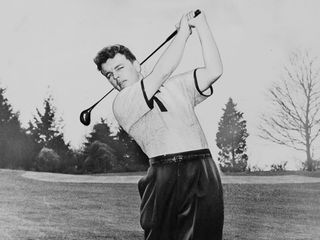
(Image credit: Getty Images)
Jack Burke Jr won the Masters and the PGA Championship in 1956. At Augusta he had come from eight shots behind, and tied fourth place, after the third to round to win.
His father, a teaching pro at River Oaks Country Club in Houston, had been joint runner up at the 1920 U.S. Open. Jack junior started playing golf aged 7, using a 4-iron for every shot, including putts.
He joined the PGA Tour after spending fours years in the Marines during World War II. He won 16 times on the PGA Tour. “I’ve never tried to win,” he said. “I just put the next shot out. They’ll come tell you if you win.”
When he retired from competitive golf he focused on his teaching at Champions Golf Club, the club which he had founded with another Major winner, Jimmy Demaret. Among those he gave lessons to, was Phil Mickelson who said after Burke died aged 100 that “I’ll always appreciate how giving of his time he was to anyone who wanted to learn and work at the game of golf.”
Burke played in five Ryder Cup consecutive matches from 1951, including being the playing captain in 1957, when Great Britain won for the first time since 1933. As a player he won seven of his eight matches only losing his singles match in 1957. He was the non-playing captain of the victorious side in 1973.
He served as vice-captain to Hal Sutton’s losing side in 2004. Sutton said of him that “Jackie will give it to you straight. If you don’t want to know what he thinks, it’s probably better not to ask him. He doesn’t sugarcoat anything.”
Brian Huggett
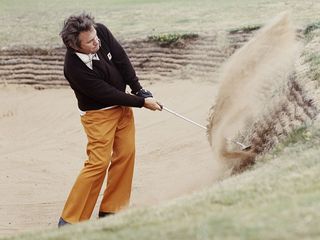
(Image credit: Getty Images)
Welshman Brian Huggett will probably be most associated in golfers’ minds with the Ryder Cup. In the encounter at Royal Birkdale in 1969 he was playing in the penultimate singles match, against Billy Casper. He was facing a 5ft putt on the 18th green to halve his match, when he heard a huge roar from the gallery around the 17th green watching the Jacklin-Nicklaus match.
He interpreted this a sign than Jacklin had won, and so this 5ft putt would win the Cup. Miss, and it would be lost. He hit the putt dead centre of the hole and dissolved into tears. The Scotsman newspaper called it “one of the gutsiest putts ever made in the long history of the Ryder Cup”.
But he had been wrong: the noise from the 17th green was because Jacklin had drawn level in his match. This match went to the 18th green where Nicklaus famously conceded a putt for a drawn match, with USA retaining the Cup as holders.
Huggett played in six Ryder Cups and the opening day at Muirfield in 1973 was one of the most memorable days of his life: in the morning his younger daughter was born and in the afternoon he and Maurice Bembridge beat the stellar combination of Jack Nicklaus and Arnold Palmer 3&1 in their fourball match. He was the only man on either side to go unbeaten through that Ryder Cup.
In all, he won 9, lost 10 and halved 6 of his 25 matches in the Ryder Cup. He was last captain of the GB and Ireland side, in 1977.
He only played one Major in the US, the 1969 Masters, when he did not make the cut. But in The Open he finished tied third, in 1962, and joint runner-up, in 1965. He did however win a Senior Major, the Senior British Open of 1988 at Royal Portrush.
Chi Chi Rodriguez

(Image credit: Getty Images)
Chi-Chi Rodríguez was a crowd-pleasing Puerto Rican golfer who won eight times on the PGA Tour, played in the Ryder Cup of 1973, and won a Senior Major.
As a child, Juan Antonio Rodríguez had dreamed of becoming a baseball player, and, as he explained, would “run around the ballpark telling everyone, ‘I’m Chi Chi Flores, I’m Chi Chi Flores. So they started calling me Chi Chi,” and, as he said later in life, “I haven’t been called Juan since I was 12 years old.”
He was born into a poor family, later wisecracking that his room was “so small I couldn’t even change my mind in it”. Aged 7, he went to work with his father in a sugar cane plantation, but realised he could earn more as caddie so, aged 8, he swapped over to caddying. He taught himself to play golf with part of a guava tree for a club and a small metal can hammered into a roundish shape for a ball.
He saw sport as a way out of poverty, but decided golf would give him a longer career than baseball. After service in the military, he joined the PGA Tour, using his early winnings to buy his mother a house.
When he was a caddie he played a match for money in which he holed a putt, but there was a toad in the hole which popped out, taking the ball with it. His opponent refused to count this as a holed putt. So began Chi-Chi Rodríguez’s habit of tossing his hat over the hole after holing a birdie putt so the ball could not escape.
He took this routine onto the PGA Tour, which delighted the galleries more than it did his fellow pros, and the Tour Commissioner suggested he found another way to celebrate a birdie. So Rodriguez came up with his sword dance, in which he pretended he was a matador and his putter was his sword.
He was famed also for his wisecracking, his interaction with the galleries and his generosity. He set up a charity to help disadvantaged children. “A man never stands taller than when he stoops to help a child,” was one of his sayings.
His greatest golfing success came as one of the pioneers of the Senior Tour, now known as the PGA Champions. He won three times in his rookie year of 1986, then in 1987 he won seven times including in the Senior PGA Championship, setting two Champions Tour records for most consecutive victories (4) and birdies (8).
“Chi Chi Rodriguez was one of the most gifted shotmakers and colorful personalities in the game’s history,” said USGA CEO Mike Whan after Rodriguez’s death aged 88. “He made golf fun, loved people and his generosity made this world a far better place. There is no higher compliment than that.”
Grayson Murray
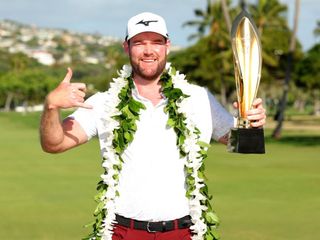
(Image credit: Getty Images)
Grayson Murray pulled out of the Charles Schwab Challenge in Texas during the middle of the second round, telling his playing partners that he felt unwell. He went home to Florida and committed suicide. He was 30.
He had been open about his depression and his alcoholism. After his death, his parents set up the Grayson Murray Foundation to promote addiction awareness and the enhancement of mental health.
Earlier in the year he had won the Sony Open in Hawaii, his second win on the PGA Tour.
